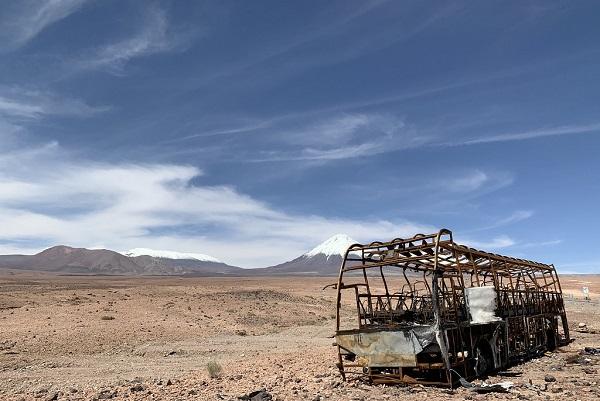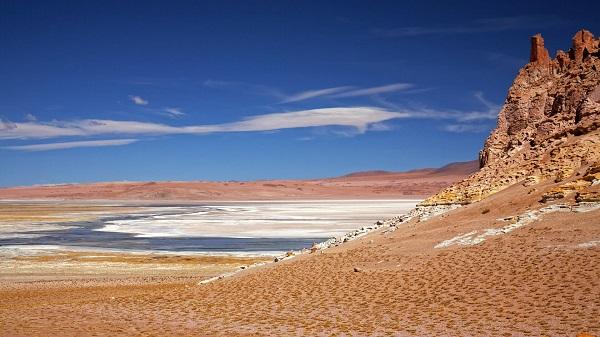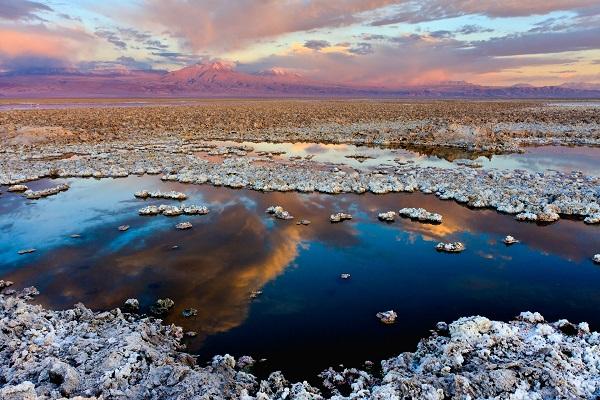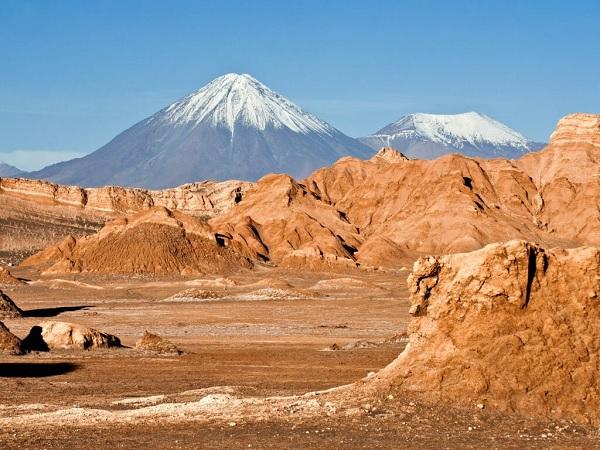
The Atacama, home to one of the harshest landscapes in the world is a desert shrouded in mystery and misery. The 1,000 KM stretch of desert is a miraculous part of the Earth which seems to have been left behind by the rest of the Earth in both evolution and development. It receives an average of 1mm of rain annually which is less than the rain received on both the arctic and Antarctica. It is therefore fair to say that the Atacama desert is the most interesting desert in the world yet there is so much that people don't know about this iconic piece of our world.
It Is The Driest But Not Hottest Desert In The World
When people hear of a desert, they imagine sandstorms and palm trees with super-high temperatures that can bake you dry. The Atacama is really dry with cracked earth most times of the year but its highest temperatures don't reach the deadly 50s Celsius of the Sahara. The highest summer temperatures range between 25 and 28°C which makes it a comfortable temperature for hiking and mountain biking. The Atacama gets very cold sometimes but it is nothing that regular warm clothing can's handle. Its extreme dryness has nothing to do with the temperature, just the lack of precipitation.
It Contains The World's Largest Supply Of Sodium Nitrate
Sodium Nitrate has been named the saviour of humanity because it is vital in the making of fertilizer which boosts the world's food supply. Sodium Nitrate can also be used to make bombs though, so it is not necessarily a sweetheart. It has a huge section of desert known as the Nitrate Belt stretching over 700KM which was heavily mined in the 1930s and 40s and was considered a vital resource to the globe during WW2. Most of the mining towns have now been abandoned as most people now resort to making Sodium Nitrate artificially rather than mining the naturally occurring version.

It May Hold The Secrets To Life On Mars
Being infertile doesn't mean that the Atacama is short of biodiversity. There are more than 500 species of plants and animals that survive on the planet. Nasa has often compared the Atacama terrain to what they find on Mars which is why many vehicles and materials being sent to the red planet are tested in the Atacama. Some of the places in the deepest part of the desert where no rain is experienced don't host any animals or plants though, but they have microbes that have evolved to survive without needing any water at all. Scientists believe that these are the only forms of life that may actually survive on Mars.
It Is Not Uninhabited
Most media present the Atacama as nothing more than huge swaths of rugged land with no sign of human life for thousands of kilometres but that is not the case. The Atacama has been inhabited for thousands of years and there is archaeological evidence to prove it. A group of nomadic hunters known as Atacamenos lived in the desert and started farming along the pacific coast as well as oases within the desert most of which have become the towns of the Atacama. Cities such as Calama and San Pedro De Atacama are the most commonly known in the desert but there are scattered human settlements in most parts of the desert.
Some Places Haven't Seen Rainfall For 15 Million Years
The Namib desert is believed to be the Earth's oldest desert with evidence of lack of rainfall for up to 55 million years. The Atacama isn't far behind though because although the regions towards the coats may get some precipitation, some regions don't see a drop of water. The Andes mountains blocks off rain-forming winds from the inland side while the Chilean Coast Range and the cold current from the pacific that prevent seawater from evaporating and forming clouds prevent rain from the coast as well. The driest soil samples are the subsoils, some of which have recorded these many years of not being touched by water.
It Is One Of The Best Places For Space Observation
The Atacama is the type of desert that doesn't have strong winds and sandstorms that could affect your vision of the night sky. With no clouds forming at night, the Atacama has proved to be the best place on Earth to set up space observation stations which is why NASA and the European Space Agency have set up their observatories there. The Atacama is also free of large cities and human activity such as cars that affect radio frequencies. It also makes a great place to enjoy your night under the stars and enjoy watching the sunset and the night sky.

Its Minerals Were The Reason For The War Of The Pacific
You wouldn't expect the Atacama to cause a world war because there isn't much to fight for in the desert apart from large swaths of rugged barren land. The war came in 1879 when both Chile and Bolivia contested for control over the region of the Atacama where deposits of Sodium Nitrate were concentrated. The borders were not clearly marked and no one really cared because it was all desert until the minerals were discovered. Chile won the war and annexed the region giving it control over the most Sodium Nitrate rich region in the world.
The Oldest Mummified Human Remains Were Found In The Desert
Egyptian mummies may be famous, but they are nothing compared to those of the Chinchorro people of the Andes. These ancient inhabitants of the Coastal regions of Chile had their method of conserving dead bodies that saw bodies retain their shape even after staying buried for over 2,000 years. The bone material of the mummies unearthed in the Atacama date back to 5050BCE while the oldest Egyptian mummies date back to 3,000 BCE. These people were either so good at mummifying bodies or the unique climate of the Atacama helped preserve them for seven millennia.
It Is Still A Top Tourist Destination
If you won't make it on the next human trip to Mars, then the Atacama will still serve the purpose. The Atacama is one of Chile's top tourist destinations as people try to experience the alien-looking terrain suitable for all kinds of desert sports. You also get the experience of clear mountain lakes and a clear night sky that you won't find anywhere else in the world. There is just no limit to the amount of fun you can have in the Atacama and it can't be recreated anywhere else in the world.

Yes! It Has Snow
It is strange to think of freezing in the world's driest desert but the Atacama is strange enough on its own so this is not so foreign. Despite its lack of rainfall, most of the Atacama is raised and the high altitude causes temperatures to fall greatly, especially towards the Andes. The high altitude causes the peaks to experience snow, although most of it doesn't spread into the rest of the desert.
No comments:
Post a Comment